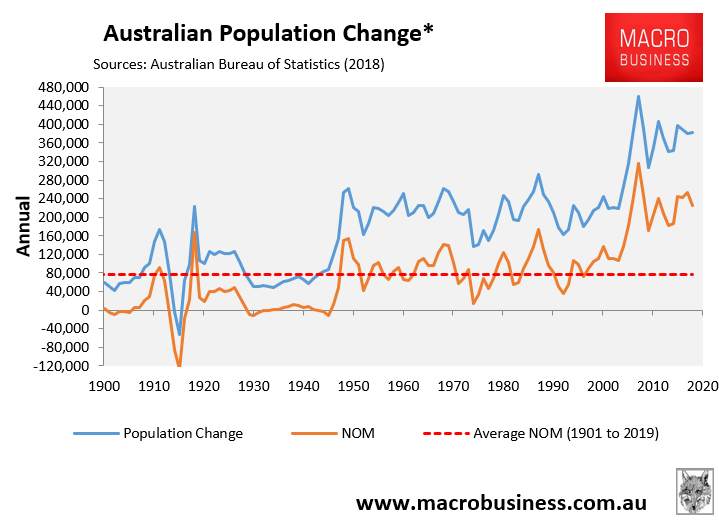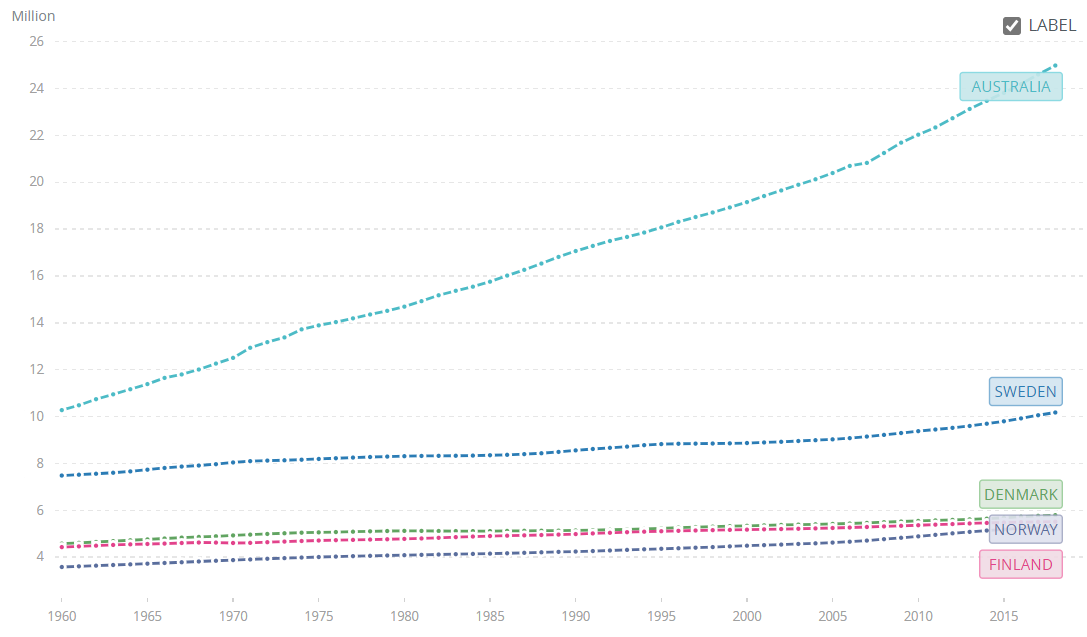For years, your ABC has been the go-to platform for biased pro-mass immigration reporting.
It has regularly provided space to contributors pushing the ‘Big Australia’ agenda, including Liz Allen, Abul Rizvi, and various business lobbyists, while rarely affording the same opportunity to those seeking lower, sustainable levels of immigration.
With this brief background in mind, it is heartening to see the ABC’s business editor, Ian Verrender, question the efficacy of the mass immigration ‘Big Australia’ policy.

According to Verrender, the high immigration program run by Australia prior to the COVID-19 pandemic helped undermine Australia’s productivity growth by crush-loading infrastructure. It also contributed to Australia’s chronically poor wage growth:
When it comes to immigration, it’s pretty much open slather.
Immigration was a boon for Australia in the post-war era. But during the past 20 years, it has been used as a cheap and easy way to make it look as though our economy was growing.
In fact, we’ve been running one of the biggest immigration policies per head of population in the developed world…
This happens partly because governments, state and federal, are happy to take the kudos for an expanding economy but are reluctant to invest in the infrastructure necessary to ensure our cities and towns work efficiently. Overcrowding leads to a slump in productivity.
But there are other impacts too. One of the big impacts is on wages. With greater competition for jobs, wages tend to stall. And that’s bad for the economy.
Spot on. Australia’s “open slather” immigration policy had several deleterious impacts on the Australian economy.
First, it caused severe overcrowding across Australia’s economic and social infrastructure, most evident across roads, public transport, schools, and hospitals in the major cities. This overcrowding, in turn, lowered productivity via the costs of congestion, as well as by increasing the unit cost of new infrastructure via ‘dis-economies of scale’.
Second, allowing companies to pluck cheap migrants en masse instead of employing and training locals has unambiguously contributed to Australia’s poor wage growth by oversupplying the labour market and eroding workers’ bargaining power. The resulting wage suppression also discouraged businesses from adopting labour saving technologies and automation, which would lift overall productivity.
Third, Australia pays its way in the world primarily by selling its fixed mineral endowment of minerals. Importing a bigger population via immigration necessarily means this mineral wealth must be spread among more people, resulting in lower wealth per capita (other things equal).
Instead of attempting to return to mass immigration post COVID, the federal government should instead aim for a lower, more sustainable level of immigration that better balances benefits and costs.
Here, the Nordic countries of Denmark, Sweden, Finland and Norway provide a sensible model of growth. These nation’s are considered by many to be among the best run and happiest nations of the world that enjoy high productivity and high living standards. Moreover, they achieved this status without resorting to high immigration-fueled population growth:
The world has 7.6 billion people. Australia doesn’t need to import them to sell to them. This is not what smart nations do.


